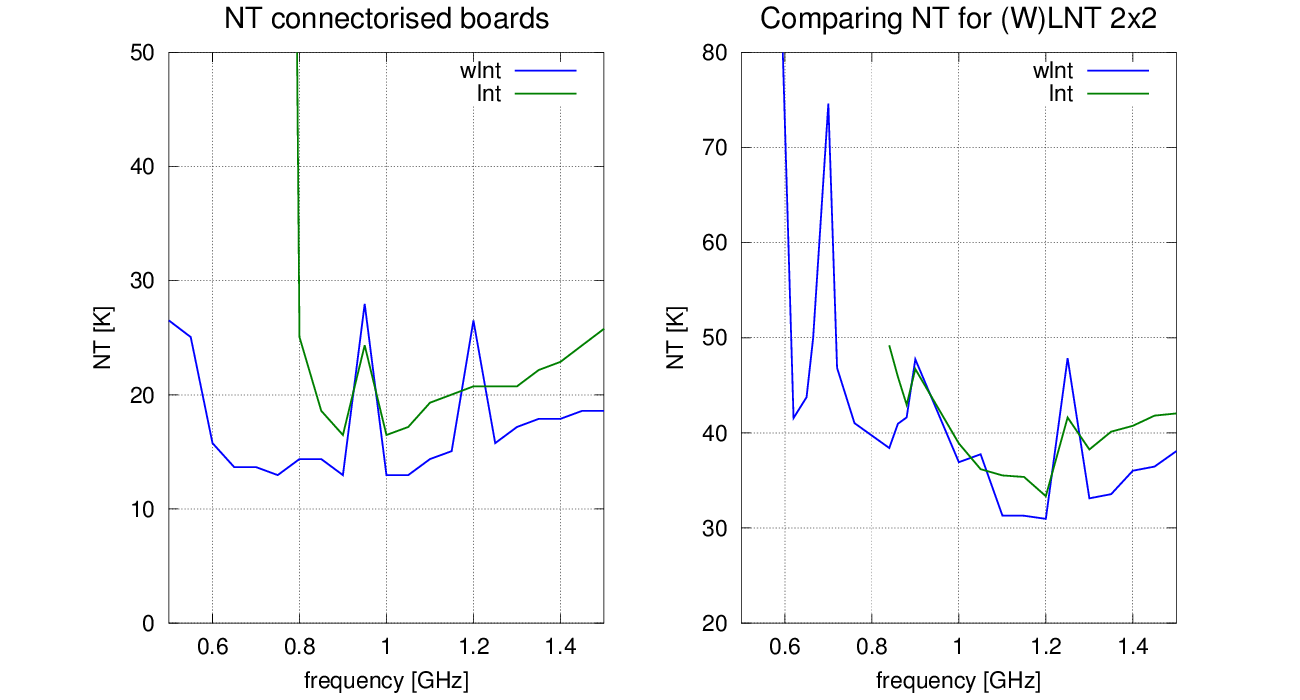Daily Image
23-03-2015The Low Noise Tile - Bandwidth extension
| Submitter: | Bert Woestenburg, Roel Witvers |
| Description: | The successful design and measurements of Low Noise Tile (LNT) arrays were presented in a series of daily images last year. The next step in the development is to broaden the frequency range, to meet the SKA Mid-Frequency Aperture Array (MFAA) specification of 500 MHz to 1500 MHz. The frequency range of the present LNT-design has a lower limit of 1000 MHz, caused by a high-pass filter for suppressing RFI from GSM and nearby TV-stations in the Netherlands. A redesign of the Low Noise Amplifier module, including removal of the high pass filter, exhibits no frequency limitation in the Wideband LNT (WLNT) amplifier module. This can be seen in the left picture, which compares WLNT LNA-results with the earlier LNT. It shows a 5 K noise temperature reduction across the original frequency range for the WLNT, due to the removal of the losses associated with the high pass filter. (The effect of the filter in the old LNT-module is seen as a sharp increase in noise temperature below 900 MHz). The figure on the right shows the measured noise temperatures of the new WLNT modules in a 2x2 array. Again, they are compared to the earlier LNT result. Above 1000 MHz, it shows a similar improvement as in the left picture. One may conclude that the absence of RFI filtering does hardly influence the noise above 1000 MHz. However, at lower frequencies, the presence of RFI only allows array noise measurements at a limited number of frequencies. Furthermore, the impedance of the Vivaldi antenna element below 800 MHz (still the same element as in the LNT, designed for optimum performance in the frequency range from 1000 MHz to 1800 MHz) deviates considerably from the optimum noise impedance of the LNA. This explains the sharp increase in array noise temperature near 700 MHz and at 600 MHz. Nevertheless, array noise temperatures close to 40 K have been measured. To achieve better performance in the low-frequency part of the band, work is now being done on the design of a new WLNT antenna element, optimized for better noise match and sensitivity over the frequency range, particularly between 500 MHz and 1000 MHz. |
| Copyright: | ASTRON |
| Tweet |  |
